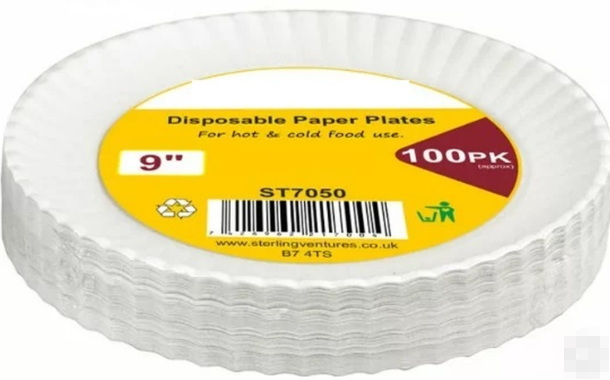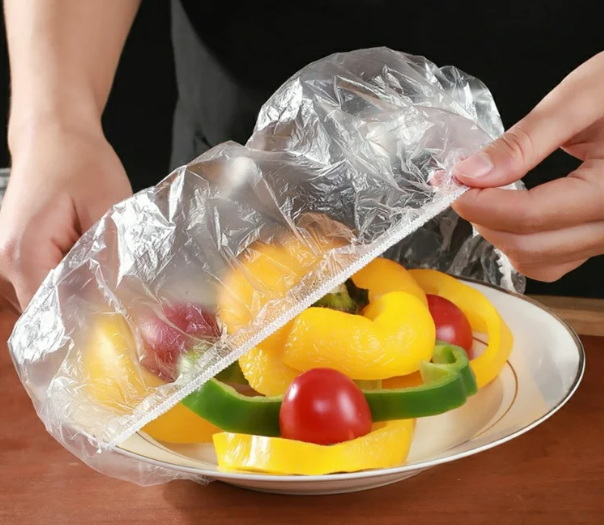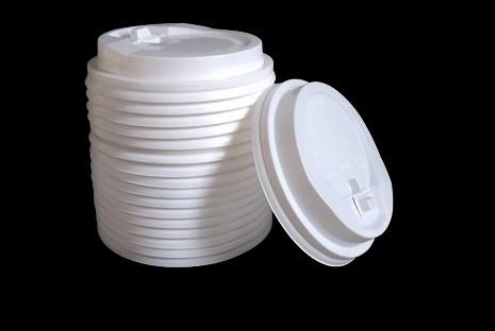
Content Menu
● Introduction to Disposable Plate Covers
>> Materials Used in Disposable Plate Covers
● Suitability for Hot Foods
>> Example: Polypropylene Disposable Plate Covers for Hot Foods
● Suitability for Cold Foods
>> Example: EPS Foam Plate Covers for Cold Foods
● Advantages of Using Disposable Plate Covers
● Environmental Considerations
>> Sustainable Options
● Conclusion
● FAQs
>> 1. What materials are commonly used for disposable plate covers?
>> 2. Can disposable plate covers be used in microwaves?
>> 3. Are disposable plate covers environmentally friendly?
>> 4. What are the advantages of using disposable plate covers?
>> 5. Can disposable plate covers maintain food temperature effectively?
● Citations:
Disposable plate covers have become an essential tool in the food service industry, offering convenience, hygiene, and efficiency in meal delivery. Whether you're managing a busy restaurant, organizing a large event, or simply looking for practical solutions for home use, disposable plate covers can be incredibly versatile. However, one common question arises: Can disposable plate covers be used for both hot and cold foods? In this article, we'll delve into the capabilities of disposable plate covers, exploring their suitability for various temperature conditions and the types of materials used in their construction.

Introduction to Disposable Plate Covers
Disposable plate covers are designed to maintain food temperature, prevent contamination, and enhance presentation. They are available in a range of materials, including polycarbonate, polypropylene, and expanded polystyrene (EPS), each with its own set of advantages and limitations.
Materials Used in Disposable Plate Covers
1. Polycarbonate (PC): Known for its clarity and durability, polycarbonate is often used in reusable plate covers. It is shatterproof and can withstand high temperatures, making it suitable for heated carts up to 210°F (99°C)[8].
2. Polypropylene (PP): This material is widely used in disposable tableware due to its high temperature resistance, up to 120°C, making it ideal for hot foods[3][10].
3. Expanded Polystyrene (EPS): Often used in foam plates, EPS provides good insulation but has limited heat tolerance and is not suitable for high-temperature foods[2][10].
Suitability for Hot Foods
Disposable plate covers made from materials like polypropylene are well-suited for hot foods. They can maintain the temperature of the food for a longer period, ensuring that meals remain warm during transport. However, materials like polystyrene are less suitable for high-temperature applications due to their lower heat tolerance and potential to deform or release harmful substances when exposed to heat[3][10].
Example: Polypropylene Disposable Plate Covers for Hot Foods
Polypropylene disposable plate covers are commonly used in fast food and takeaway services where hot meals need to be served quickly. They are durable, resistant to high temperatures, and can be used in microwaves, making them versatile for reheating food[3][10].
Suitability for Cold Foods
Disposable plate covers are also effective for maintaining the temperature of cold foods. The insulation provided by these covers helps keep salads, desserts, and other chilled items cool during transport. Materials like EPS foam, although not ideal for hot foods, offer good thermal insulation for cold dishes[2][10].
Example: EPS Foam Plate Covers for Cold Foods
EPS foam plate covers are often used for cold foods due to their lightweight and insulating properties. They are hygienic, shock-absorbing, and can maintain the temperature of cold dishes effectively[2][10].
Advantages of Using Disposable Plate Covers
1. Convenience: Disposable plate covers eliminate the need for washing, reducing labor and resources.
2. Hygiene: They provide a barrier against airborne contaminants, ensuring food safety during transport.
3. Versatility: Available in various materials, they can be used for both hot and cold foods.

Environmental Considerations
While disposable plate covers offer convenience, their environmental impact is a concern. Many are made from non-biodegradable plastics, contributing to waste and pollution. However, there are eco-friendly alternatives emerging, such as biodegradable materials, which can reduce environmental harm[10].
Sustainable Options
Sugarcane bagasse plates, for instance, are biodegradable and compostable, offering a more sustainable option for disposable tableware. They are durable, heat-resistant, and safe for food contact, making them suitable for both hot and cold foods[10].
Conclusion
Disposable plate covers can indeed be used for both hot and cold foods, depending on the material used. Polypropylene covers are ideal for hot meals, while EPS foam covers are better suited for cold dishes. As the demand for sustainable options grows, biodegradable materials like sugarcane bagasse are becoming increasingly popular. Whether you're looking for convenience, hygiene, or environmental sustainability, there's a disposable plate cover solution available.

FAQs
1. What materials are commonly used for disposable plate covers?
- Disposable plate covers are made from materials such as polycarbonate, polypropylene, and expanded polystyrene (EPS), each offering different levels of durability and temperature resistance.
2. Can disposable plate covers be used in microwaves?
- It depends on the material. Polypropylene covers are generally microwave-safe, but polystyrene and EPS covers should not be used in microwaves due to their limited heat tolerance.
3. Are disposable plate covers environmentally friendly?
- Most traditional disposable plate covers are not environmentally friendly as they are made from non-biodegradable plastics. However, biodegradable alternatives like sugarcane bagasse plates are emerging as more sustainable options.
4. What are the advantages of using disposable plate covers?
- Disposable plate covers offer convenience by eliminating washing needs, enhance hygiene by preventing contamination, and provide versatility for use with both hot and cold foods.
5. Can disposable plate covers maintain food temperature effectively?
- Yes, disposable plate covers are designed to maintain food temperature. They provide insulation that helps keep hot foods warm and cold foods cool during transport.
Citations:
[1] https://kha.com.au/kh-healthcare/insulated-plate-cover-and-base/moderne-plate-cover-insulated-green/
[2] https://academy.monouso-direct.com/types-of-plates/
[3] https://www.cnnbcy.com/news/industry-news/the-temperature-resistance-of-disposable-tableware-limits-its-application-scenarios.html
[4] https://www.istockphoto.com/photos/disposable-plate
[5] https://www.aladdintemprite.com/products/trays-traytop-components/domes-plate-covers.html
[6] https://www.youtube.com/watch?v=oFYoKYasjVg
[7] https://www.cambro.com/Products/meal-service/plate-covers/
[8] https://www.restaurantware.com/products/cater-tek-clear-polycarbonate-plate-cover-8-1-2-10-count-box
[9] https://www.freepik.com/free-photos-vectors/disposable-plate
[10] https://www.bioleaderpack.com/best-disposable-plates-for-hot-food-warm-dinner/
[11] https://www.kimecopak.ca/blogs/news/disposable-paper-plate-buying-guide
[12] https://www.restaurantware.com/blogs/food-presentation/disposable-dinner-plate-buying-guide
[13] https://www.factorydirectparty.com/blogs/party-ideas/are-plastic-plates-safe-to-use
[14] https://ecojimu.en.made-in-china.com/product/EQjRGuvYvVrK/China-Biodegradable-Disposable-Cold-and-Heat-Resistant-90mm-Cup-Lid-Paper-Coffee-Cup.html
[15] https://www.reddit.com/r/chemistry/comments/xz8gr5/are_there_any_disposable_plates_that_hold_moist/
[16] https://www.alibaba.com/showroom/disposable-plates-with-lid.html
[17] https://www.aladdintemprite.com/dish-plate-disposable-round-white-highheat-divided-a46hdv.html
[18] https://heraldqualitydisposables.com/faq-items/can-i-use-paper-plates-for-hot-foods-and-liquids/
[19] https://www.rewardhospitality.com.au/takeaway-and-packaging/takeaway/plates-platters-and-bowls
[20] https://www.carlislefsp.com/disposables/high-heat-disposables/DXHHPL903
[21] https://www.sumkoka.com/can-you-put-plates-or-dishes-in-the-oven.html
[22] https://www.alibaba.com/showroom/heat-resistance-aluminum-foil-plate.html
[23] https://droppe.com/blog/article/food-utensils-buyer-guide/
[24] https://www.istockphoto.com/photos/disposable-plastic-plates
[25] https://www.shutterstock.com/video/search/disposable-paper-plate
[26] https://en.wikipedia.org/wiki/Disposable_food_packaging
[27] https://www.shutterstock.com/search/disposable-plates
[28] https://www.youtube.com/watch?v=GsCyaY0ZPjY
[29] https://www.pinterest.com/ideas/disposable-tableware/926363942160/
[30] https://stock.adobe.com/search?k=disposable+plates
[31] https://www.istockphoto.com/videos/disposable-plates
[32] https://www.alibaba.com/showroom/disposable-hot-food-plate.html
[33] https://www.shutterstock.com/search/packaging-plastic-plate
[34] https://www.shutterstock.com/video/search/disposable-plates
[35] https://cooking.stackexchange.com/questions/71153/is-it-okay-to-cover-food-in-the-fridge-with-paper-plates
[36] https://www.hungryonion.org/t/food-covers-who-uses-them/7348
[37] https://www.youtube.com/watch?v=r2dSujSUSj8
[38] https://www.pearsalad.com/catering-menu/disposable-products/
[39] https://www.vectorstock.com/royalty-free-vectors/disposable-plates-vectors
[40] https://www.youtube.com/watch?v=f36fk--B2qA

















